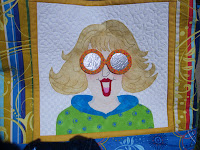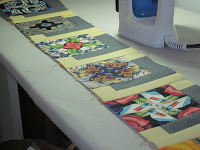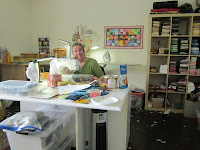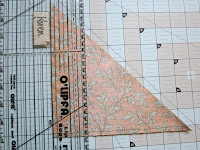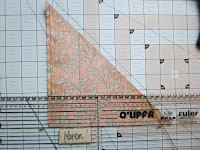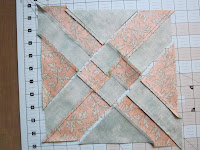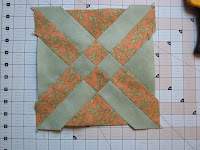Friends Patty, Agnes, Barbara and Barbra and myself took a road trip up to Ontario, CA last Friday for the Road to California quilt show. It is the second biggest show in Southern California I think (next to the Long Beach International Quilt Festival in July). We were all excited to see the quilts and shop the vendors. It was a beautiful day and we arrived at the Ontario Convention Center a little before 10 am. I was looking for a specific thimble to replace my favorite that I lost a while back, so I headed for the vendors. I made it up one aisle with no luck and decided it was too crowded to try another aisle. The booths and aisles were just packed, with everyone in gridlock, barely moving in any direction. I went to look at the quilts and although there were a lot of people, it was much better than the vendors. I cannot express how beautiful the quilts were. It seemed like the next quilt was more exquisite than the last one. I took over 350 pictures, which I have posted on Flickr:
http://www.flickr.com/photos/karensphotos2011/sets/72157628992585891 I hope you will take a look at them. You won't be disappointed.
We all met for lunch and shared our purchases. I found my thimble and I bought a new applique glue called Appli-Glue. It is archival and has a skinny plastic tip that isn't supposed to clog like Roxanne's sometimes does. Also bought a jacket pattern using batiks and a little wooden sign that says "Just stitchin'....no bitchin'." Since my friendship quilting group is Stitch 'n Bitch Quilters, I thought I would paint out the "o" so it says "Just stitchin' 'n bitchin'." --Excuse my language, no offense intended!
After lunch I wandered over to the other hall, and right there at the entrance was The Quilt Show booth and there were Ricky Tims and Alex Anderson right there in the booth. I decided to buy a DVD set of one of their show series and chatted with Ricky for a few minutes while I waited to be rung up. He was so friendly and approachable. He even smiled for a picture with me. If you aren't familiar with their show, it is internet based. Just google The Quilt Show and you'll find it. The show itself, on which Ricky and Alex host well-known quilters every other week, is a subscription membership, but you can subscribe to their newsletter and get lots of tips, short videos and quilting news for free.

Here are a few of the wonderful quilts. There were also some fashions, The Hoffman Challenge and some dolls.
If you have never attended this show, you must do it sometime. The quilts are just magnificent.





